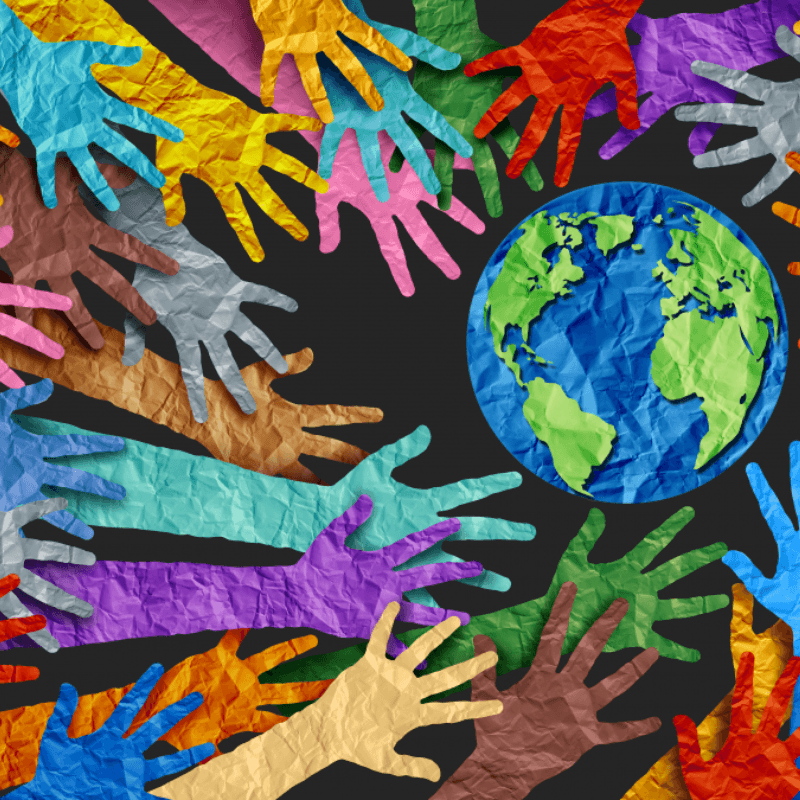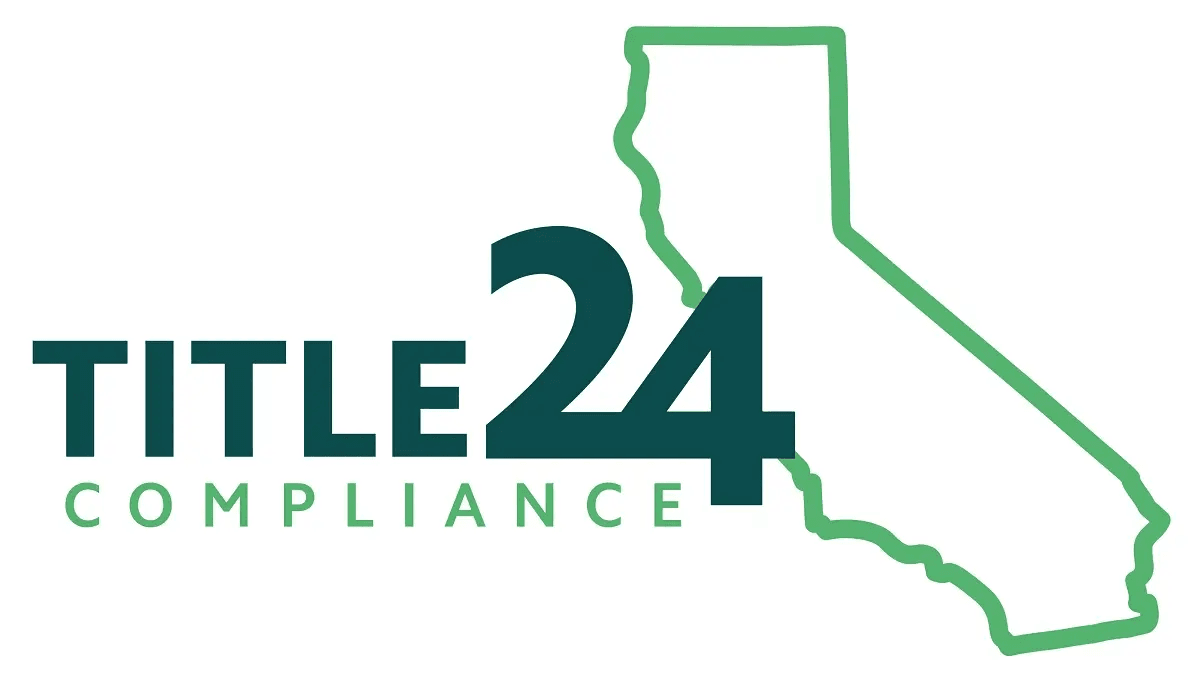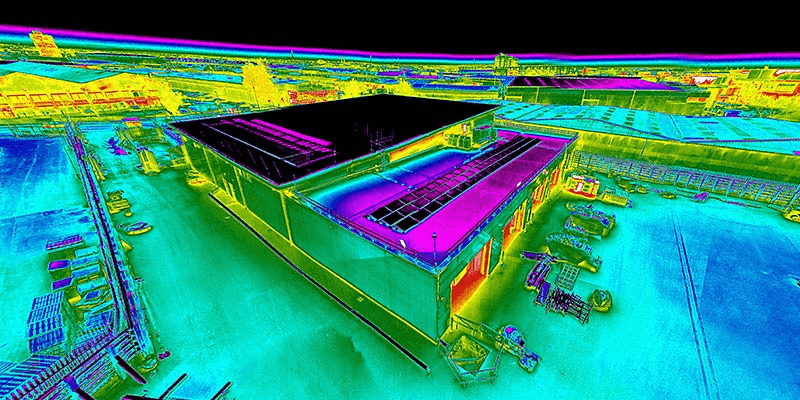
Our Mission:
We are a nonprofit organization dedicated to reducing the urban heat island effect through community education, free thermal imaging services, and roofing grants designed to promote sustainable, cooler urban environments.
Combatting the Urban Heat Island Effect for a Cooler, More Sustainable Future
Our Passion and Commitment to Reducing Urban Heat
At the heart of our organization is a deep commitment to creating cooler and healthier urban spaces. Urban heat islands pose a growing threat as cities expand and climates change—raising temperatures where millions live and work. Excess heat affects public health, increases energy bills, and accelerates climate impacts. We are dedicated to lowering the urban heat burden in the most densely populated and at-risk cities through innovative education programs, accessible technology, and direct support services like our free thermal imaging and roofing grants. Our goal is to empower communities to build resilience and promote environmental justice by addressing urban heat proactively.
- Empower environmental justice.
- Education, tech, grants.
- Heat island threat.
- Cooler urban spaces.

What Is the Urban Heat Island Effect and Why Does It Matter?
The urban heat island (UHI) effect arises because cities, with their extensive concrete, asphalt, and buildings, absorb and trap heat far more than natural landscapes. This effect can elevate local temperatures by up to 15°F (8°C) compared to nearby rural areas, especially during hot summer months. Consequences of UHI include increased energy consumption for cooling, aggravated air pollution, elevated greenhouse gas emissions, and heightened heat-related illnesses and mortality, particularly impacting vulnerable communities.
🌊 Water Quality Impact
Hot stormwater runoff from urban surfaces raises the temperature of local water bodies. Urban streams can experience temperature surges as high as 18°F higher, stressing aquatic ecosystems.
💨 Smog/Ozone Formation
Elevated urban temperatures accelerate smog formation. The UHI effect contributes up to 20% of smog concentrations in U.S. urban areas, with a 1° temperature rise potentially increasing smog incidence by 5% in certain regions.
⚡ Energy Consumption
The UHI effect increases demand for cooling. It’s responsible for an estimated 5% to 10% of community-wide electricity demand for air conditioning, and can cause a median increase of 19% in cooling energy consumption for individual buildings.
🏗️ Infrastructure Damage
High temperatures cause asphalt roads to soften and buckle (leading to speed restrictions and repairs) and metal railway tracks to expand and deform, increasing the risk of structural failure and disruption.


Combatting the Urban Heat Island Effect
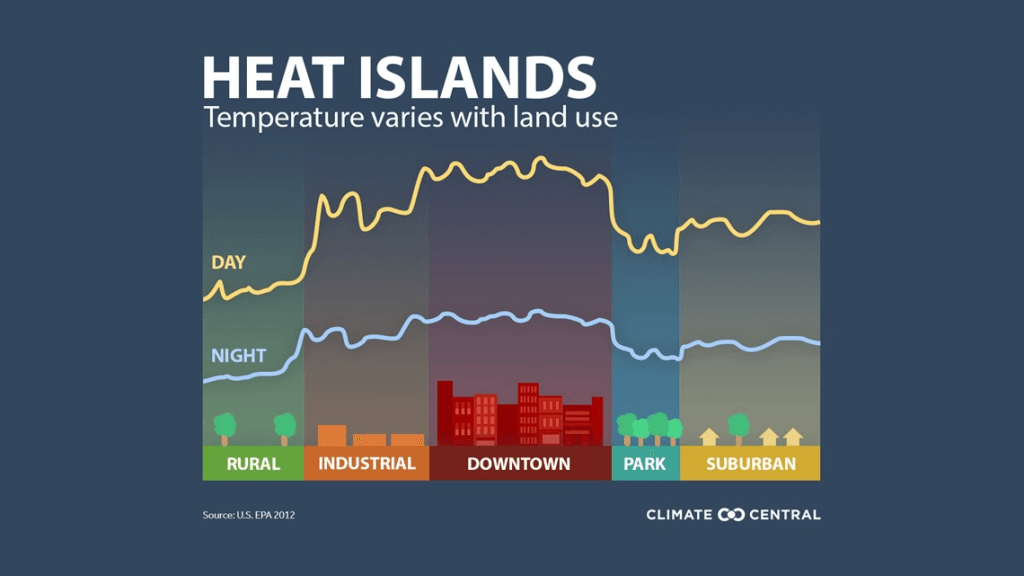
Urban areas experience significantly higher temperatures than surrounding environments—a phenomenon known as the Urban Heat Island (UHI) Effect.
Financial Stress: Excessive heat intensifies energy consumption and strains electrical grids, leading to higher operating costs.
Health Risks: UHI poses serious health risks—especially for vulnerable populations such as the elderly, children, and those with chronic illnesses.
Environmental Damage: UHI exacerbates air pollution and increases greenhouse gas emissions.
Combatting the Urban Heat Island Effect
🏗️ Core Causes of the UHI Effect
The primary drivers of the UHI effect stem from the fundamental changes humans make to the natural landscape during urbanization:
Low Albedo Materials (Heat Absorption): Cities are built with vast amounts of dark surfaces like asphalt, concrete, and conventional dark roofing materials. These materials have low albedo (low reflectivity), meaning they absorb and store solar radiation (heat) during the day rather than reflecting it. This stored heat is then slowly released back into the air at night, which is why the UHI effect is often most noticeable after sunset.
Lack of Vegetation and Evapotranspiration: Rural areas benefit from natural cooling mechanisms provided by trees and vegetation. Plants cool the air through evapotranspiration, a process where they release water vapor from their leaves, which consumes energy and cools the surrounding air (similar to human sweating). Cities replace these natural coolers with impervious surfaces, eliminating this cooling effect.
Urban Geometry (The “Urban Canyon”): Tall buildings lining narrow streets create what is known as the urban canyon effect. These vertical walls absorb heat and then re-radiate it onto the street and sidewalks. Furthermore, the buildings and their concentration can block wind flow, preventing the hot air from being ventilated and replaced with cooler air from outlying areas.
Waste Heat (Anthropogenic Heat): All human activities generate heat. In densely populated cities, this anthropogenic heat from sources like vehicle exhaust, industrial processes, and especially the exhaust from air conditioning (HVAC) systems is concentrated, further increasing the local ambient temperature.


Send Us a Message For Any Inquiries
FAQ'S
Frequently Asked Questions
What is the goal of your nonprofit?
Our mission is to reduce the negative impacts of the Urban Heat Island (UHI) effect in densely populated cities. We do this by providing actionable, data-backed services—specifically free thermal imaging reports and access to cool roofing grants—to help commercial building owners make sustainable and energy-efficient upgrades.
Who is eligible for the free Thermal Imaging Service?
Our complimentary, advanced thermal imaging service is currently offered to owners of commercial buildings located within the specified high-risk urban heat zones in California. This service is designed to help businesses and non-profits identify and address their property’s largest sources of heat retention and energy loss.
Why do I need a Thermal Imaging Report, and what does it show?
A thermal imaging report is a powerful, non-invasive diagnostic tool. Using drone-mounted infrared technology, the report:
Pinpoints areas of high heat retention (the “hot spots” contributing to UHI).
Identifies moisture intrusion and water damage hidden beneath the roof surface.
Exposes energy inefficiencies caused by poor or damaged insulation. This data is crucial for planning targeted, cost-effective repairs and for maximizing grant eligibility.
How much does the Thermal Imaging Report cost, and what is its true value?
The thermal imaging report is offered at no cost to qualifying commercial building owners, as it is a core component of our nonprofit’s mitigation mission. The retail cost for a comparable commercial thermal roof scan typically ranges between $500 and $1,000, making our service a significant, value-driven resource for energy and structural diagnostics.
What are the cool roofing grants, and how do I qualify?
The roofing grants are funds made available through programs like the California Heat Island Mitigation Program (CHIMP). These grants are specifically for implementing cool roofing solutions that reflect sunlight and reduce heat absorption. To qualify, you must first receive a qualifying, detailed thermal imaging report from our service, which documents the building’s current energy inefficiencies.
How much savings can I expect from a cool roofing grant?
The CHIMP roofing grants can cover a substantial portion of the project’s expense, often cutting the cost of qualifying cool roof repairs, restoration, or full replacement by up to 50%. By reducing the financial burden, we aim to accelerate the adoption of these essential, sustainable building upgrades.
How long does the thermal imaging process take?
The drone-based thermal imaging scan itself is typically a quick, non-disruptive process, often completed within one to two hours after sunset (when temperature differentials are highest for accurate readings). The full, detailed report with actionable recommendations is usually delivered to the building owner within 7–10 business days following the scan.
Why are you focusing on commercial buildings instead of residential?
Commercial and large industrial buildings often have expansive, low-sloped, dark roofs that are the single largest contributors to the surface temperature of the Urban Heat Island effect. By focusing our high-impact thermal and grant resources on these key structures, we can achieve the maximum amount of heat mitigation and energy savings for the surrounding urban neighborhood.
Join Our Weekly Newsletter

Useful Links
- Home
- Education
- Drone Thermal Imaging
- Grants/Funding
- Blog
- Contact Us
Contact Info
- +5689 2589 6325
- contact@californiaheatislandmitigationprogram.org
- 21 King Street Melbourne, 3000, Australia

